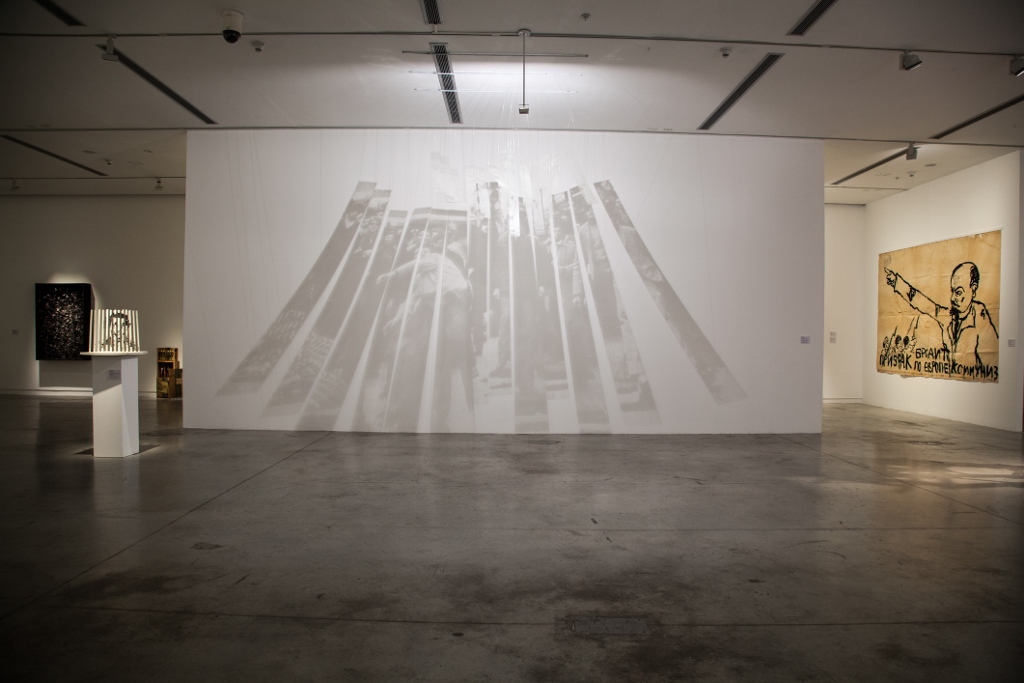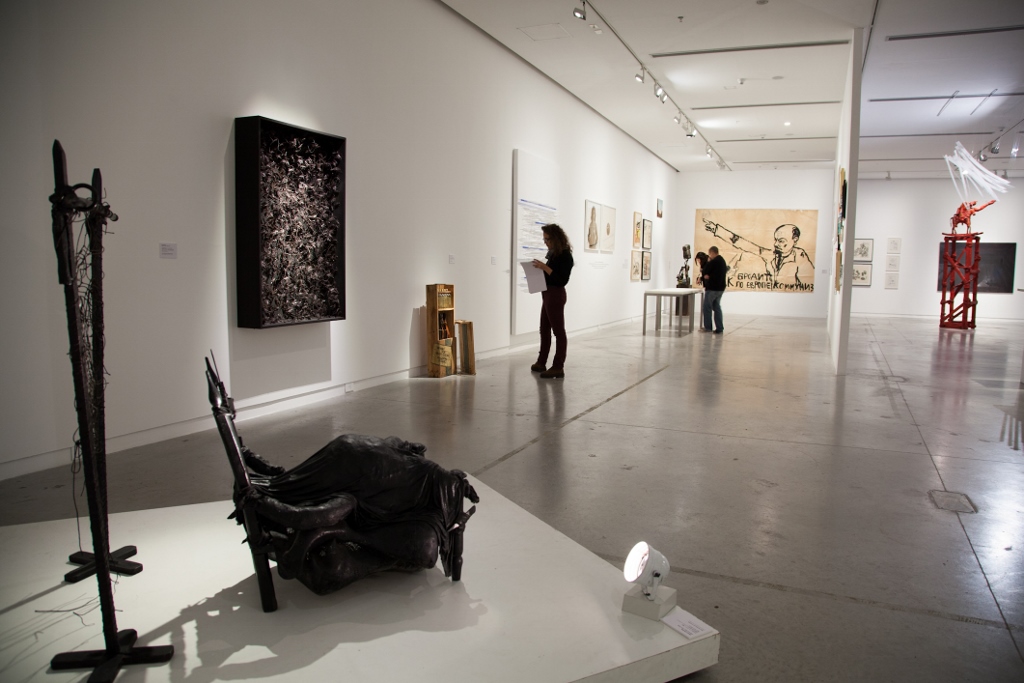The exhibition Winners and Losers: the Scars of Violence in the Collection of the Museo de Arte Moderno de Buenos Aires curated by Ana María Battistozzi, featured fifty large format artworks by key artists from the history of Argentine art from the Museo de Arte Moderno collection.
Whenever violence raises its ugly head over the political and social parapet, contemporary art, says the curator, resounds with myriad responses that express the general sense of fear, uncertainty and outrage. Sadly, such echoes have often appeared in Argentinian art and culture, reflecting specific historical and political events but also something deeper and more profound. In fact, it is possible to identify a continuum of explicit references, rhetorical strategies and artistic methodologies related to violence in Argentinian art from the past half-century.
Works such as Los vencedores (The Winners), painted by Jorge de la Vega in 1961 and Figuras from 1960 by Noé, who also participated in the group Otra figuración (Another Configuration), can be seen as the starting point for a process that would go on to produce high voltage hits such as El Parto (The Birth) and El San Martín by Alberto Heredia and Crucifixión by Norberto Gómez. Other works featured in this exhibition became indisputable landmarks in the history of art. They include: El hacha (The Axe) and the Anteproyectos de Cárceles para artistas (Anti-projects of Prisons for Artists) by Horacio Zabala, and Violencia (Violence) by Juan Carlos Romero, from 1972 and 1973; Sombras del Sur y del Norte (Shadows of the North and South) by Graciela Sacco and Culpable e Inocente (Guilty and Innocent) by Oscar Bony from the end of the 20th Century; Cucarachas (Cockroaches) by León Ferrari and the series of Mesadas (Table-tops) by Cristina Piffer, which refer to the violence that broke out in 2001; plus other significant works such as the ironic Kremlin y castigo (Kremlin and Punishment) by Prior-Kuitca from 1983 and the more recent creations of Santiago Porter and Florencia Rodríguez Giles.
To read this important collection in terms of violence is to decipher its implications and allusions, and also to somehow achieve, through aesthetic and conceptual consideration of these artistic responses, an understanding of the events of the past that cast such a long shadow on the culture of the present.
The exhibition also featured artworks by the following artists: Ananké Assef, Ricardo Carpani, Diana Dowek, Nicolás García Uriburu, Alberto Greco, Nicolás Guagnini, Enio Iommi, Guillermo Kuitca, Jorge Macchi, Rosalía Myriam Maguid, Nuna Mangiante, Hernán Marina, Gian Paolo Minelli, Daniel Ontiveros, Margarita Paksa, Sandro Pereira, Duilio Pierri, Dalila Puzzovio, Silvia Rivas, Graciela Sacco, Antonio Seguí, Regina Silveira, Gabriel Valansi, Mónica Van Asperen and Edgardo Antonio Vigo.






